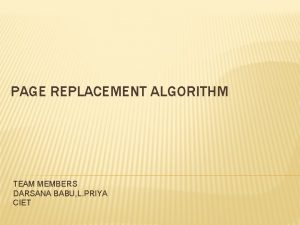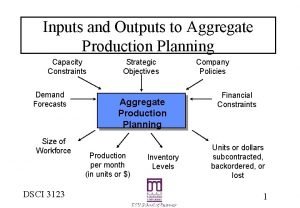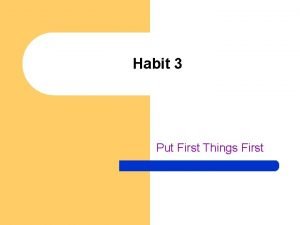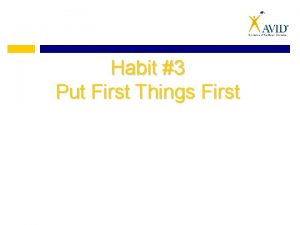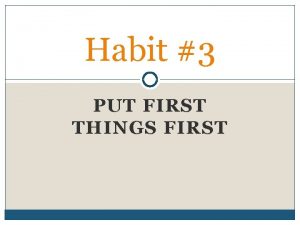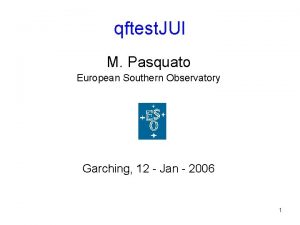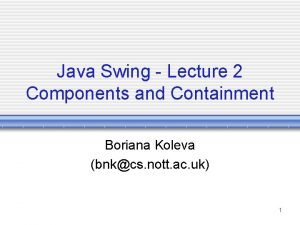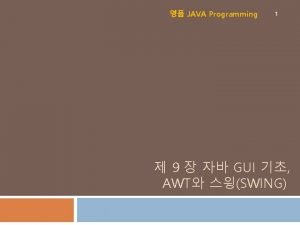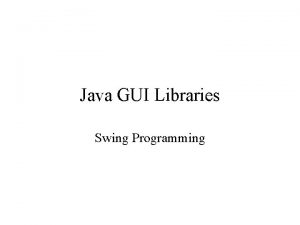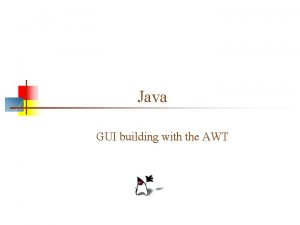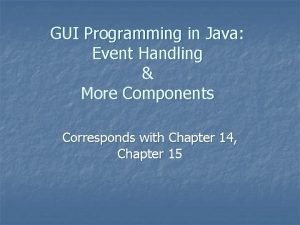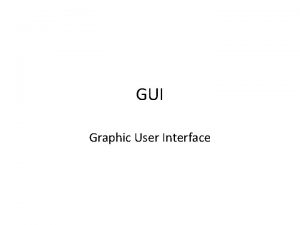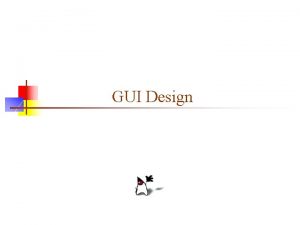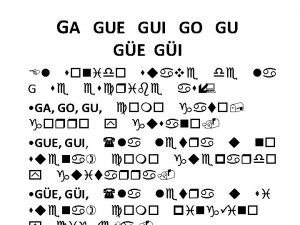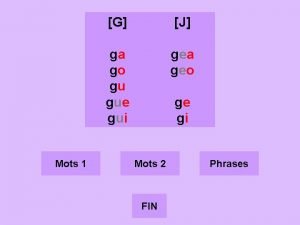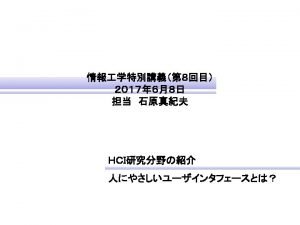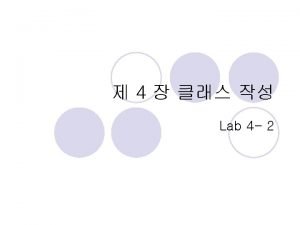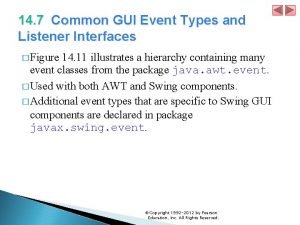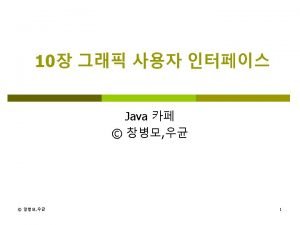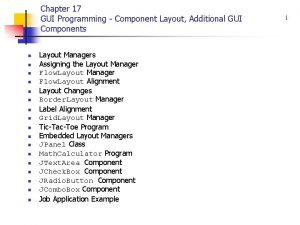CHAPTER 12 A First Look at GUI Applications








































































- Slides: 72

CHAPTER 12 A First Look at GUI Applications Copyright © 2016 Pearson Education, Ltd.

Chapter Topics Chapter 12 discusses the following main topics: – – – – Introduction of GUI and Java GUI Classes Creating Windows Equipping GUI Classes with a main method Layout Managers Radio Buttons and Check Boxes Borders Focus on Problem Solving: Extending Classes from JPanel © 2016 Pearson Education, Ltd. 12 -2

Introduction • Many Java application use a graphical user interface or GUI (pronounced /ˋguɪ/ ). • A GUI is a graphical window or windows that provide interaction with the user. • GUI’s accept input from: – the keyboard – a mouse. • A GUI window consists of components that: – present data to the user – allow interaction with the application. © 2016 Pearson Education, Ltd. 12 -3

Introduction • Some common GUI components are: – Buttons (按鈕), labels (標籤), text fields (文字框), check boxes (勾選盒 : 複選用), radio buttons (點選鈕 : 單選用), combo boxes (下拉式選單), list (清單), and sliders (滑軸). 1 4 2 3 5 6 © 2016 Pearson Education, Ltd. 12 -4

JFC, AWT, Swing • Java programmers use the Java Foundation Classes (JFC,Java基礎類別) to create GUI applications. • The JFC consists of several sets of classes, many of which are beyond the scope of this book. • The two sets of JFC classes that we focus on are – AWT, and – Swing classes. • Java is equipped with a set of classes for drawing graphics and creating graphical user interfaces. – These classes are part of the Abstract Windowing Toolkit (AWT). © 2016 Pearson Education, Ltd. 12 -5

JFC, AWT, Swing • The AWT allows creation of applications and applets having GUI components. • The AWT does not actually draw GUI components on the screen. • The AWT communicates with a layer of software, peer classes (伙伴類別). • Each version of Java for a particular operating system has its own set of peer classes. © 2016 Pearson Education, Ltd. 12 -6

JFC, AWT, Swing • Java programs using the AWT: – look consistent with other applications on the same system. – can offer components that are common to all the operating systems that support Java. • The behavior of AWT components across various operating systems can differ. • AWT components are commonly called heavyweight components (重量級元件). © 2016 Pearson Education, Ltd. 12 -7

JFC, AWT, Swing • Swing was introduced with the release of Java 2. • Swing is a library of classes that provide an improved alternative for creating GUI applications and applets. • Very few Swing classes rely on peer classes, so they are referred to called lightweight components (輕量級元件). • Swing draws most of its own components. • Swing components have a consistent look on any operating system. • Swing components can be easily extended. (AWT components cannot be easily extended. ) © 2016 Pearson Education, Ltd. 12 -8

Event Driven Programming • Programs that operate in a GUI environment must be event-driven. • An event is an action that takes place within a program, such as the clicking of a button. • Part of writing a GUI application is creating event listeners (事件監聽器). • An event listener is an object that automatically executes one of its methods when a specific event occurs. © 2016 Pearson Education, Ltd. 12 -9

javax. swing and java. awt • In an application that uses Swing classes, it is necessary to use the following statement: import javax. swing. *; – Note the letter x that appears after the word java. • In an application that uses an AWT class, it is necessary to use the following statement. import java. awt. *; – Note that there is no x after java in this package name. • Some of the AWT classes are used to determine when events, such as the clicking of a mouse, take place in applications. © 2016 Pearson Education, Ltd. 12 -10

Creating Windows • Often, applications need one or more windows having various components. • A window is a container, which is a GUI component that holds other components. • A frame (框架) is a container that can be displayed as a window. • In a Swing application, you create a frame from the JFrame class. © 2016 Pearson Education, Ltd. 12 -11

Creating Windows • A frame is a basic window that has: – a border around it, – a title bar (標題軸), and – a set of buttons for: • minimizing, • maximizing, and • closing the window. • These standard features are sometimes referred to as window decorations (視窗裝飾物). © 2016 Pearson Education, Ltd. 12 -12

Creating Windows • See example: Show. Window. java • The following import statement is needed to use the swing components: import javax. swing. *; • In the main method, two constants are declared: final int WINDOW_WIDTH = 350; final int WINDOW_HEIGHT = 250; We use these constants later in the program to set the size of the window. • The window’s size is measured in pixels (畫素). • A pixel (picture element) is one of the small dots that make up a screen display. © 2016 Pearson Education, Ltd. 12 -13

Creating Windows • An instance (實例) of the JFrame class can be created by: JFrame window = new JFrame(); • This statement: – creates a JFrame object in memory and – assigns its address to the window variable. • The string passed to the set. Title method will appear in the window’s title bar when it is displayed. window. set. Title("A Simple Window"); © 2016 Pearson Education, Ltd. 12 -14

Creating Windows • To set the size of the window, use the following statement: window. set. Size(WINDOW_WIDTH, WINDOW_HEIGHT); • To specify the action to take place when the user clicks on the close button. window. set. Default. Close. Operation(JFrame. EXIT_ON_CLOSE); • The set. Default. Close. Operation method takes an int argument which specifies the action. – JFrame. HIDE_ON_CLOSE causes the window to be hidden from view, but the application does not end. – The default action is JFrame. HIDE_ON_CLOSE. © 2016 Pearson Education, Ltd. 12 -15

Creating Windows • A JFrame is initially invisible. • The following code displays the window: window. set. Visible(true); • The set. Visible method takes a boolean argument. – true - display the window. – false - hide the window. © 2016 Pearson Education, Ltd. 12 -16

Extending JFrame • We usually use inheritance to create a new class that extends the JFrame class. • When a new class extends an existing class, it inherits many of the existing class’s members just as if they were part of the new class. – New fields and methods can be declared in the new class declaration. – This allows specialized methods and fields to be added to your window. • Examples: Simple. Window. java (Listing 12 -2, p. 803) Simple. Window. Demo. java (Listing 12 -3, p. 805) © 2016 Pearson Education, Ltd. 12 -17

Equipping GUI Classes with a main Method • Java applications always starts execution with a method named main. • The previous example used two separate files: – Simple. Window. java -- the class that defines the GUI window – Simple. Window. Demo. java – containins the main method that creates an instance of the Simple. Window class. • Applications can also be written with the main method directly written into the GUI class. • See example: Embedded. Main. java (Listing 12 -4, p. 805) © 2016 Pearson Education, Ltd. 12 -18

Adding Components • Swing provides numerous GUI components that can be added to a window. • Three fundamental components are: JLabel : An area that can display text. JText. Field : An area in which the user may type a single JButton : line of input from the keyboard. A button that can cause an action (CLICK event) to occur when it is clicked (點擊). © 2016 Pearson Education, Ltd. 12 -19

Sketch of Kilometer Converter GUI Text Field Window Title Label Button © 2016 Pearson Education, Ltd. 12 -20

Adding Components private … message JLabel message; JText. Field kilometers; JButton calc. Button; = new JLabel( "Enter a distance in kilometers"); kilometers = new JText. Field(10); calc. Button = new JButton("Calculate"); • This first three code lines declare three Swing components. • This last three code lines instantiates three Swing components. © 2016 Pearson Education, Ltd. 12 -21

Adding Components • A content pane (內容窗板) is a container that is part of every JFrame object. • Every component added to a JFrame must be added to its content pane. You do this with the JFrame class's add method. • The content pane is not visible and it does not have a border. • A panel (鑲板) is also a container that can hold GUI components. © 2016 Pearson Education, Ltd. 12 -22

Adding Components • Panels cannot be displayed by themselves. • Panels are commonly used to hold and organize collections of related GUI components. • Create panels with the JPanel class. private JPanel panel; … panel = new JPanel(); panel. add(message); panel. add(kilometers); panel. add(calc. Button); © 2016 Pearson Education, Ltd. 12 -23

Adding Components ① First, GUI components are placed on a panel. ② Then, the panel is added to the JFrame's content pane by the statement : add(panel); ② ① • Examples: Kilo. Converter. java (Phase 1, Listing 12 -5, p. 808) © 2016 Pearson Education, Ltd. 12 -24

Handling Action Events • An event is an action that takes place within a program, such as the clicking (點擊) of a button. • When an event takes place, the component that is responsible for the event creates an event object in memory. • The event object contains information about the event. • The component that generated the event object is know as the event source. © 2016 Pearson Education, Ltd. 12 -25

Handling Action Events • An event listener (事件監聽器、事件感應器) is an object that responds to events. • The event source component fires (觸發) an event which is passed to a method in the event listener. • It is possible that the event source component is connected to one or more event listeners (事件監聽器). • Event listener classes are commonly written as private inner classes in an application. inner class © 2016 Pearson Education, Ltd. 12 -26

Writing Event Listener Classes as Private Inner Classes A class that is defined inside of another class is known as an inner class public class Outer { Fields and methods of the Outer class appear here. private class Inner { Fields and methods of the Inner class appear here. } } © 2016 Pearson Education, Ltd. 12 -27

Event Listeners Must Implement an Interface • All event listener classes must implement an interface. • An interface is something like a class containing one or more method headers. • When you write a class that implements an interface, you are agreeing that the class will have all of the methods that are specified in the interface. © 2016 Pearson Education, Ltd. 12 -28

Handling Action Events • JButton components generate action events, which require an action listener class to respond. • Action listener classes must meet the following requirements: – It must implement the Action. Listener interface. – It must have a method named action. Performed. • The action. Performed method takes an argument of the Action. Event type. public void action. Performed(Action. Event e) { Code to be executed when button is pressed goes here. } © 2016 Pearson Education, Ltd. 12 -29

Handling Action Events Example: Kilo. Converter. java (Phase 2 , Listing 12 -6, p. 815) © 2016 Pearson Education, Ltd. 12 -30

Registering A Listener • The process of connecting an event listener object to a GUI component is called registering (登記) event listener. • JButton components have a method named add. Action. Listener for registering event listener. calc. Button. add. Action. Listener( new Calc. Button. Listener()); Event Object e calc. Button (JButton Component) Calc. Button. Listener (Event Listener Object) void action. Performed(Action. Event e) When the button is pressed … © 2016 Pearson Education, Ltd. 12 -31

Background and Foreground Colors • Many of the Swing component classes have methods named set. Background and set. Foreground. – set. Background is used to change the color of the component itself. – set. Foreground is used to change the color of the text displayed on the component. – Each method takes a color constant as an argument. © 2016 Pearson Education, Ltd. 12 -32

Color Constants • There are predefined constants that you can use for colors. Color. BLACK Color. CYAN Color. GRAY Color. LIGHT_GRAY Color. ORANGE Color. RED Color. YELLOW Color. BLUE Color. DARK_GRAY Color. GREEN Color. MAGENTA Color. PINK Color. WHITE • Examples: Color. Window. java (Listing 12 -7, p. 821) © 2016 Pearson Education, Ltd. 12 -33

The Action. Event Object • Event objects contain certain information about the event. • This information can be obtained by calling one of the event object’s methods. – get. Source - returns a reference to the object that generated this event. – get. Action. Command - returns the action command for this event as a String. • Example: – Event. Object. java (Listing 12 -8, p. 825) – Event. Object 2. java © 2016 Pearson Education, Ltd. 12 -34

Layout Managers (版面編排經理) • An important part of designing a GUI application is determining the layout (版面編排) of the components. • The term layout refers to the positioning (位置設定) and sizing (大小設定) of GUI components. • In Java, you do not normally specify the exact location of a GUI component within a window. • A layout manager is an object that: – controls the positions and sizes of GUI components, and – makes adjustments when necessary. © 2016 Pearson Education, Ltd. 12 -35

Layout Managers • The layout manager object and the container work together. • Java provides several layout managers: – Flow. Layout (流動式版面) - Arranges components in rows. This is the default for panels. – Border. Layout (邊界版面) - Arranges components in five regions: • North, South, East, West, and Center. • This is the default layout manager for a JFrame object’s content pane. – Grid. Layout (格狀版面) - Arranges components in a grid with rows and columns. © 2016 Pearson Education, Ltd. 12 -36

Layout Managers • The Container class is one of the base classes (基礎類別) that many GUI components are derived from. • Any component that is derived from the Container class can have a layout manager added to it. • You add a layout manager to a container by calling the set. Layout method. JPanel panel = new JPanel(); panel. set. Layout(new Border. Layout()); • In a JFrame constructor you might use the following statement for content pane: set. Layout(new Flow. Layout()); © 2016 Pearson Education, Ltd. 12 -37

Flow. Layout Manager • Flow. Layout is the default layout manager for JPanel objects. • Components appear horizontally, from left to right, in the order that they were added. When there is no more room in a row, the next components “flow” to the next row. • See example: Flow. Window. java (Listing 12 -9, p. 831) © 2016 Pearson Education, Ltd. 12 -38

Flow. Layout Manager • The Flow. Layout manager allows you to align components: – in the center of each row – along the left or right edges of each row. • The Flow. Layout constructor allows you to pass the following parameter: – Flow. Layout. CENTER, – Flow. Layout. LEFT, or – Flow. Layout. RIGHT. • Example: set. Layout(new Flow. Layout(Flow. Layout. LEFT)); © 2016 Pearson Education, Ltd. 12 -39

Flow. Layout Manager • Flow. Layout inserts a gap of five pixels between GUI components, horizontally and vertically. • The Flow. Layout constructor allows these to be adjusted. • The constructor has the following format: Flow. Layout(int alignment, int horizontal. Gap, int vertical. Gap) • Example: set. Layout(new Flow. Layout(Flow. Layout. LEFT, 10, 7)); © 2016 Pearson Education, Ltd. 12 -40

Border. Layout Manager Arranges components in five regions: • North, South, East, West, and Center. © 2016 Pearson Education, Ltd. 12 -41

Border. Layout Manager • See example: Border. Window. java (Listing 12 -10, p. 834) • A component placed into a container that is managed by a Border. Layout must be placed into one of five regions: – – – Border. Layout. NORTH Border. Layout. SOUTH Border. Layout. EAST Border. Layout. WEST Border. Layout. CENTER © 2016 Pearson Education, Ltd. 12 -42

Border. Layout Manager • Each region can hold only one component at a time. • When a component is added to a region, it is stretched so it fills up the entire region. • Border. Layout is the default manager for JFrame objects. add(button, Border. Layout. NORTH); • If you do not pass a second argument to the add method, the component will be added to the center region. © 2016 Pearson Education, Ltd. 12 -43

Border. Layout Manager • Normally the size of a button is just large enough to accommodate the text that it displays • The buttons displayed in Border. Layout region will not retain their normal size. • The components are stretched to fill all of the space in their regions. © 2016 Pearson Education, Ltd. 12 -44

Border. Layout Manager • If the user resizes the window, the sizes of the components will be changed as well. • Border. Layout manager resizes components: – placed in the north or south regions may be resized horizontally so it fills up the entire region, – placed in the east or west regions may be resized vertically so it fills up the entire region. – A component that is placed in the center region may be resized both horizontally and vertically so it fills up the entire region. – Run Border. Window. java (Listing 12 -10, p. 834) to test. © 2016 Pearson Education, Ltd. 12 -45

Border. Layout Manager • By default there is no gap between the regions. • The Border. Layout constructor allows horizontal and vertical gaps to be specified (in pixels). • The constructor has the following format Border. Layout(int horizontal. Gap, int vertical. Gap) • Example: set. Layout(new Border. Layout(5, 10)); © 2016 Pearson Education, Ltd. 12 -46

Nesting Components in a Layout • Adding components to panels and then nesting the panels inside the layout regions can overcome the single component limitation of layout regions. • By adding buttons to a JPanel and then adding the JPanel object to a region, sophisticated layouts can be achieved. • See example: Border. Panel. Window. java (Listing 12 -11, p. 838) © 2016 Pearson Education, Ltd. 12 -47

Grid. Layout Manager Grid. Layout creates a grid with rows and columns, much like a spreadsheet. A container that is managed by a Grid. Layout object is divided into equally sized cells. columns rows © 2016 Pearson Education, Ltd. 12 -48

Grid. Layout Manager • Grid. Layout manager follows some simple rules: – Each cell can hold only one component. – All of the cells are the size of the largest component placed within the layout. – A component that is placed in a cell is automatically resized to fill up any extra space. • You pass the number of rows and columns as arguments to the Grid. Layout constructor. © 2016 Pearson Education, Ltd. 12 -49

Grid. Layout Manager • The general format of the constructor: Grid. Layout(int rows, int columns) • Example set. Layout(new Grid. Layout(2, 3)); • A zero (0) can be passed for one of the arguments but not both. – passing 0 for both arguments will cause an Illegal. Argument. Exception to be thrown. © 2016 Pearson Education, Ltd. 12 -50

Grid. Layout Manager • Components are added to a Grid. Layout in the following order (for a 5× 5 grid): 1 2 3 4 5 6 7 8 9 10 11 12 13 14 15 16 17 18 19 20 21 22 23 24 25 © 2016 Pearson Education, Ltd. Example: Grid. Window. java (Listing 12 -12, p. 841) Grid. Layout also accepts nested components: Example: Grid. Panel. Window. java (Listing 12 -13, p. 843) 12 -51

Radio Buttons (點選鈕) • Radio buttons allow the user to select one choice from several possible options. • The JRadio. Button class is used to create radio Button appears buttons. already selected • JRadio. Button constructors: when true – JRadio. Button(String text) – JRadio. Button(String text, boolean selected) • Example: JRadio. Button radio 1 = new JRadio. Button("Choice 1"); or JRadio. Button radio 1 = new JRadio. Button( "Choice 1", true); © 2016 Pearson Education, Ltd. 12 -52

Button Groups • Radio buttons normally are grouped together. • In a radio button group only one of the radio buttons in the group may be selected at any time. • Clicking on a radio button selects it and automatically deselects any other radio button in the same group. • An instance of the Button. Group class is a used to group radio buttons © 2016 Pearson Education, Ltd. 12 -53

Button Groups • The Button. Group object creates the mutually exclusive relationship (互斥關係) between the radio buttons that it contains. JRadio. Button radio 1 = new JRadio. Button("Choice 1", true); JRadio. Button radio 2 = new JRadio. Button("Choice 2"); JRadio. Button radio 3 = new JRadio. Button("Choice 3"); Button. Group group = new Button. Group(); group. add(radio 1); group. add(radio 2); group. add(radio 3); © 2016 Pearson Education, Ltd. 12 -54

Button Groups • Button. Group objects are not containers like JPanel objects, or content frames. • If you wish to add the radio buttons to a panel or a content frame, you must add them individually. panel. add(radio 1); panel. add(radio 2); panel. add(radio 3); © 2016 Pearson Education, Ltd. 12 -55

Radio Button Events • JRadio. Button objects generate an action event when they are clicked. • To respond to an action event, you must write an action listener class, just like a JButton event handler. © 2016 Pearson Education, Ltd. 12 -56

Determining Selected Radio Buttons • The JRadio. Button class’s is. Selected method returns a boolean value indicating if the radio button is selected. if (radio. is. Selected()) { // Code here executes if the radio // button is selected. } • Example: Metric. Converter. java (Listing 12 -14, p. 848) © 2016 Pearson Education, Ltd. 12 -57

Selecting a Radio Button in Code • It is also possible to select a radio button in code with the JRadio. Button class’s do. Click method. • When the method is called, the radio button is selected just as if the user had clicked on it. • As a result, an action event is generated. radio. do. Click(); © 2016 Pearson Education, Ltd. 12 -58

Check Boxes • A check box appears as a small box with a label appearing next to it. • Like radio buttons, check boxes may be selected or deselected at run time. • When a check box is selected, a small check mark appears inside the box. • Check boxes are often displayed in groups but they are not usually grouped in a Button. Group. © 2016 Pearson Education, Ltd. 12 -59

Check Boxes • The user is allowed to select any or all of the check boxes that are displayed in a group. • The JCheck. Box class is used to create check boxes. Check appears in box if true • Two JCheck. Box constructors: JCheck. Box(String text) JCheck. Box(String text, boolean selected) • Example: JCheck. Box check 1 = new JCheck. Box("Macaroni"); or JCheck. Box check 1 = new JCheck. Box("Macaroni", true); © 2016 Pearson Education, Ltd. 12 -60

Check Box Events • When a JCheck. Box object is selected or deselected, it generates an item event. • Handling item events is similar to handling action events. • Write an item listener class, which must meet the following requirements: – It must implement the Item. Listener interface. – It must have a method named item. State. Changed. • This method must take an argument of the Item. Event type. © 2016 Pearson Education, Ltd. 12 -61

Check Box Events • Create an object of the class • Register the item listener object with the JCheck. Box component. • On an event, the item. State. Changed method of the item listener object is automatically run – The event object is passed in as an argument. © 2016 Pearson Education, Ltd. 12 -62

Determining Selected Check Boxes • The is. Selected method will determine whether a JCheck. Box component is selected. • The method returns a boolean value. if (check. Box. is. Selected()) { // Code here executes if the check // box is selected. } • See example: Color. Check. Box. Window. java (Listing 12 -15, p. 854) © 2016 Pearson Education, Ltd. 12 -63

Selecting Check Boxes in Code • It is possible to select check boxes in code with the JCheck. Box class’s do. Click method. • When the method is called, the check box is selected just as if the user had clicked on it. • As a result, an item event is generated. check. Box. do. Click(); © 2016 Pearson Education, Ltd. 12 -64

Borders • Windows have a more organized look if related components are grouped inside borders. • You can add a border to any component that is derived from the JComponent class. – Any component derived from JComponent inherits a method named set. Border © 2016 Pearson Education, Ltd. 12 -65

Borders • The set. Border method is used to add a border to the component. • The set. Border method accepts a Border object as its argument. • A Border object contains detailed information describing the appearance of a border. • The Border. Factory class, which is part of the javax. swing package, has static methods that return various types of borders. © 2016 Pearson Education, Ltd. 12 -66

Border. Factory Method Description Compound border create. Compound. Border A border that has two parts: an inside edge and an outside edge. The inside and outside edges can be any of the other borders. Empty border create. Empty. Border A border that contains only empty space. Etched border create. Etched. Border A border with a 3 D appearance that looks “etched” into the background. Line border create. Line. Border A border that appears as a line. Lowered bevel border create. Lowered. Bevel. Border A border that looks like beveled edges. It has a 3 D appearance that gives the illusion of being sunken into the surrounding background. Matte border create. Matte. Border A line border that can have edges of different thicknesses. Raised bevel border create. Raised. Bevel. Border A border that looks like beveled edges. It has a 3 D appearance that gives the illusion of being raised above the surrounding background. Titled border create. Titled. Border An etched border with a title. © 2016 Pearson Education, Ltd. 12 -67

The Brandi’s Bagel House Application • A complex application that uses numeroous components can be constructed from several specialized panel components, each containing other components and related code such as event listeners. Examples: GUI 主程式: Order. Calculator. GUI. java (Listing 12 -20, p. 869) • 模組程式 1: Greeting. Panel. java (Listing 12 -16, p. 861) • 模組程式 2: Bagel. Panel. java (Listing 12 -17, p. 862) • 模組程式 3: Topping. Panel. java (Listing 12 -18, p. 864) • 模組程式 4: Coffee. Panel. java (Listing 12 -19, p. 866) © 2016 Pearson Education, Ltd. 12 -68

GUI of Brandi’s Bagel House Application © 2016 Pearson Education, Ltd. 12 -69

Splash Screens • A splash screen is a graphic image that is displayed while an application loads into memory and starts up. • A splash screen keeps the user's attention while a large application loads and executes. • Beginning with Java 6, you can display splash screens with your Java applications. © 2016 Pearson Education, Ltd. 12 -70

Splash Screens • To display the splash screen you use the java command in the following way when you run the application: java -splash: Graphic. File. Name Class. File. Name • Graphic. File. Name is the name of the file that contains the graphic image, and Class. File. Name is the name of the. class fi le that you are running. • The graphic file can be in the GIF, PNG, or JPEG formats. • Example : java -splash: Brandi. Logo. jpg Bagel © 2016 Pearson Education, Ltd. 12 -71

Using Console Output to Debug a GUI • Display variable values, etc. as your application executes to identify logic errors – Use System. out. println() // For debugging, display the text entered, and // its value converted to a double. System. out. println("Reading " + str + " from the text field. "); System. out. println("Converted value: " + Double. parse. Double(str)); • See example: Kilo. Converter. java (Listing 12 -21, p. 875) © 2016 Pearson Education, Ltd. 12 -72
 Look up and down gif
Look up and down gif Ge gi gue gui güe güi
Ge gi gue gui güe güi History of graphical user interface
History of graphical user interface Activity 1 picture identification
Activity 1 picture identification Activity 1 image
Activity 1 image Look at the picture in activity 3
Look at the picture in activity 3 Applications of the first derivative
Applications of the first derivative Impersonal communication
Impersonal communication Chapter 3 skills and applications
Chapter 3 skills and applications Chapter 6 basic maneuvers
Chapter 6 basic maneuvers Chapter 28 unemployment
Chapter 28 unemployment Chapter 23.1 performing range of motion exercises
Chapter 23.1 performing range of motion exercises Chapter 8 linear programming applications solutions
Chapter 8 linear programming applications solutions Chapter 4 applications of derivatives
Chapter 4 applications of derivatives The life skill practicing wellness is
The life skill practicing wellness is Line regulation
Line regulation Chapter 4 applications of derivatives
Chapter 4 applications of derivatives The maturity continuum covey
The maturity continuum covey Breadth first and depth first search
Breadth first and depth first search Sdl first vs code first
Sdl first vs code first Put first things first activities
Put first things first activities Put first things first
Put first things first Difference between code first and database first approach
Difference between code first and database first approach First to invent or first to file
First to invent or first to file Stack declaration
Stack declaration![Stack=[] digunakan untuk membuat stack dengan Stack=[] digunakan untuk membuat stack dengan](data:image/svg+xml,%3Csvg%20xmlns=%22http://www.w3.org/2000/svg%22%20viewBox=%220%200%20200%20200%22%3E%3C/svg%3E) Stack=[] digunakan untuk membuat stack dengan
Stack=[] digunakan untuk membuat stack dengan First in first out
First in first out First come first serve
First come first serve Put first things first definition
Put first things first definition Fcfs gantt chart
Fcfs gantt chart See do get model 7 habits
See do get model 7 habits Habit 3 put first things first
Habit 3 put first things first Put first things first video
Put first things first video Habit 3 activities
Habit 3 activities First aid merit badge first aid kit
First aid merit badge first aid kit Objectives of first aid
Objectives of first aid 7 habits promise
7 habits promise Uml gui
Uml gui Gui in software engineering
Gui in software engineering Brokertec gui
Brokertec gui Ruby gui toolkit
Ruby gui toolkit Pengertian gui
Pengertian gui Jui gui
Jui gui Metasploit hail mary
Metasploit hail mary Cli vs gui
Cli vs gui Aplikasi desktop linux yang banyak digunakan pada mode gui
Aplikasi desktop linux yang banyak digunakan pada mode gui Linux gui interface
Linux gui interface Java swing container
Java swing container 자바 gui 프로그램
자바 gui 프로그램 Gui programmierung java
Gui programmierung java Java gui awt
Java gui awt Java gui basics
Java gui basics Immediate mode gui
Immediate mode gui Gui event handling
Gui event handling Pengertian gui
Pengertian gui Gui vs hmi
Gui vs hmi Blooper example
Blooper example What is a gui
What is a gui Sopa de letras con ga gue gui go gu
Sopa de letras con ga gue gui go gu G/gu/ge
G/gu/ge Elmer gui
Elmer gui Cui gui
Cui gui Gui bloopers
Gui bloopers Characteristics of web user interface
Characteristics of web user interface Windows builder eclipse
Windows builder eclipse Dns server with gui
Dns server with gui Common gui event types and listener interfaces in java
Common gui event types and listener interfaces in java Gui design
Gui design Wpf d3dimage
Wpf d3dimage Rveillon
Rveillon Instalasi sistem operasi berbasis gui dapat dilakukan dari
Instalasi sistem operasi berbasis gui dapat dilakukan dari Matlab gui 設計
Matlab gui 設計 Instalasi sistem operasi berbasis gui dapat dilakukan dari
Instalasi sistem operasi berbasis gui dapat dilakukan dari












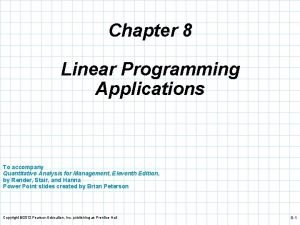



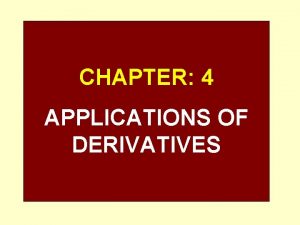







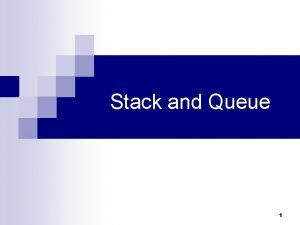
![Stack=[] digunakan untuk membuat stack dengan Stack=[] digunakan untuk membuat stack dengan](https://slidetodoc.com/wp-content/uploads/2020/10/1003988_042512bb86e3aab910dfb86ac5697e60-300x212.jpg)
